Today I am going to share with you how to make beef tallow. This fat is solid at room temperature, but liquifies when it is warmed. It’s great for baking, frying, and cooking with. Plus, it has a long shelf life!
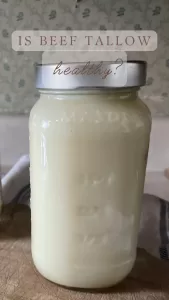
Beef tallow has been used for generations and for a good reason. It is a culinary treasure that transcends generations and brings rich flavors to your kitchen. Crafting beef tallow is not only a celebration of traditional cooking methods, but also helps us to be more sustainable and use every part of the cow for a zero waste approach.
Consuming the animal’s organs and fats have been vilified, but we need fats even at a cellular level! The human body’s cell membranes are made up of fats and need them for optimal health. So ditch the grocery stores and its processed food laden aisles. Find a local farmer who has grass-fed cows and you’ll get some of the highest quality fat out there.
Beyond the kitchen, beef tallow is also used skincare industry as it’s a proven secret weapon for moisturizing and nourishing the skin. In this post, we’ll explore the art of making beef tallow, with easy to follow steps while highlighting the numerous benefits of this age old fat. Up your cooking game all while embracing the delicious versatility of homemade beef tallow – all while being sustainable and resourceful too.
What is beef tallow? 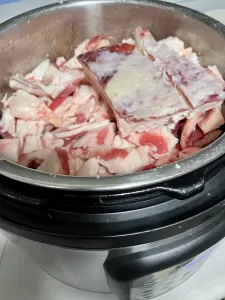
Beef tallow is a rendered beef fat that has been cooked to separate the solids (such as proteins and impurities) from the fat. Traditionally, it has been used as a cooking fat for centuries in different culinary ways. To make beef tallow, beef fat (usually beef suet, which is the hard fat around the cow’s kidneys) is melted down and the solids strained out via a fine mesh strainer or cheesecloth. This allows the hot, liquid fat to be separated and be used in beauty protects or cooking.
Once this hot, liquid fat is strained away from the solids, it will solidify at room temperature and have a creamy, pale appearance. It’s actual a simple process if you are interested in making your own!
Is beef tallow healthy?
In today’s world, this is the million dollar question. You have been warned since the mid 1900s that animal products are loaded with cholesterol and saturated fat, so naturally, they must be unhealthy. But are the replacements, vegetable oils (canola, soy, corn, etc) any healthier?
Vegetable oils, sometimes called “seed oils”, are pro-inflammatory, void of nutrients, and toxic to our bodies, causing mitochondrial dysfunction. They began to become widely used when cholesterol, found in animals fats, became enemy #1.
One frequently cited study from the 1950s that pointed a finger as cholesterol levels (found in animal fats and products) as the driving force of heart disease, involved researchers giving rabbits cholesterol in corn oil. Just as we cannot say that fiber is a miracle nutrient due to foods being high in fiber being good for our digestive tract, we cannot say cholesterol alone is the driving force (especially when it was in the very oil that causes health issues) in heart disease.
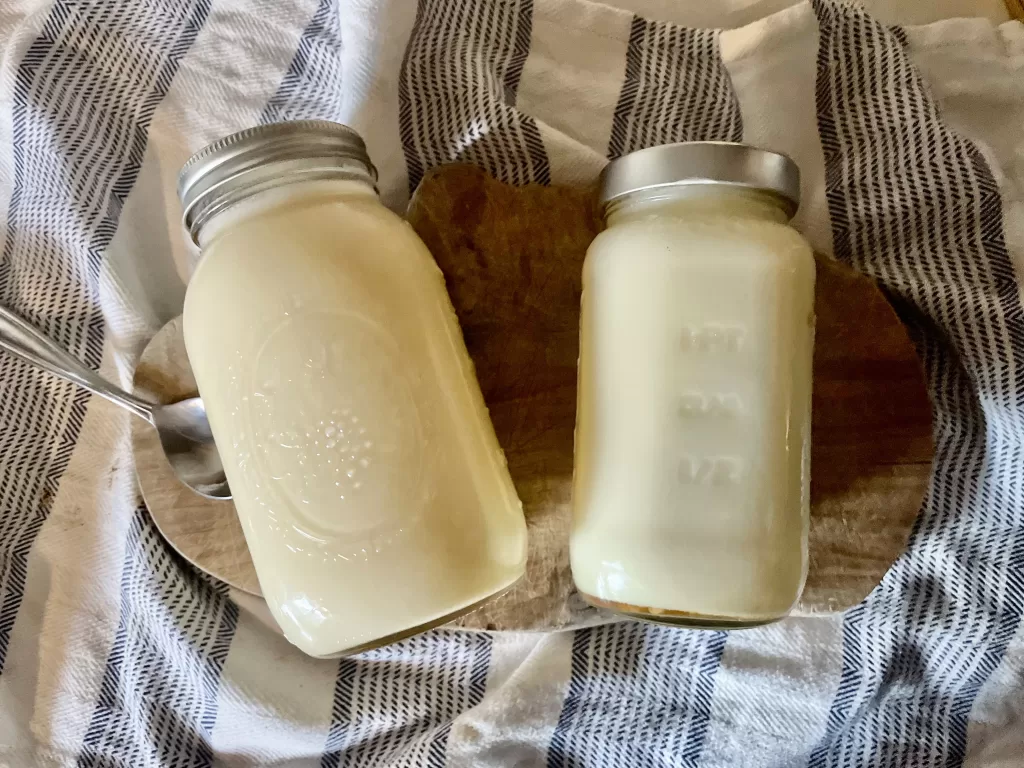
I was actually quite surprised to find this article on PubMed stating this:
However, the totality of scientific evidence and experimental data did not validate the hypothesis that dietary cholesterol increases blood cholesterol, and by extension increases the risk of CVD.
In other words, eating more cholesterol rich foods has not been show to increase blood cholesterol, which is blamed for cardiovascular disease (heart disease). It has also been seen, when eaten in moderation, saturated fat as part of a healthy diet decreases some people’s risk of obesity and Type II diabetes.
So if eating cholesterol is not increasing blood cholesterol levels, what is?
Some argue it is heredity while others, like Dr. Stephen E Langer who wrote Solved: The Riddle of Illness would argue some people’s high cholesterol is a result of undiagnosed thyroid dysfunction.
You can read more about the history of seed oils in The Oiling of American by Sally Fallon and Mary Enig, PhD. But as always, you need to do your own research from websites you trust to determine what is best for your and your family’s health.
Health benefits of tallow
-
Provides healthy fats, including cholesterol
- At the University of Illinois – Champaign, researchers looked at the fat composition of grass fed beef tallow vs grain fed beef tallow. They found the amount and type of polyunsaturated fats found in grass-fed beef tallow were similar to those found in coconut oil! Polyunsaturated fat (sometimes referred to as PUFA) is found throughout plant and animals foods and has 2 main types: omega 6 and omega 3. You need to keeps these in balance because they support heart health, brain health, your joints, and more! So if you can, opt for tallow from grass-fed cattle!
-
Provides and helps to absorb vitamins
- Fat-soluble vitamins A, D, E, and K are super important for bone, immune system, eye, heart, and brain health (to name a few). However, they can be toxic when you supplement with them from synthetic sources. Vitamin D in particular is one many take a synthetic version of currently and needs vitamin K to best be absorbed.
-
Has a very high smoke point
- Like coconut oil, tallow fat is a good cooking oil to use for deep frying. Vegetable oils become toxic and rancid when heated to a certain point. When you heat vegetable or canola oil to higher than their smoke point, you are creating free radicals which react with oxygen to form harmful compounds. Tallow, lard (rendered pork fat), and coconut oil offer a higher smoke point meaning they will not be releasing these free radicals at the temperature you are usually using them.
-
It is great for skin health
- Grass-fed tallow has become a popular ingredient in skincare products. Companies like Primally Pure and Toups & Co make some amazing facial and body moisturizers with tallow from grass-fed cows. (Here’s $5 off your Toups and Co Organics purchase!) Plus, these companies use essential oils in their products, so you do not have to worry about artificial fragrances.
- At a cellular level, your cells are made with fats. This makes tallow is a great choice for your skin because your cells need fats to be health. You can also find tallow soap and lip balms, all of which I have been a fan of! The vitamin E in beef tallow also helps to reverse free radical damage and hydrate your skin.
-
Fats may help aid in weight loss
- Carbs don’t keep us full. In fact, if eaten early in the morning, they can set us off on a roller coaster of blood sugar ups and downs, leaving us tired and craving more food. Fat intake early in the morning not only tastes good, but can leave us feeling satisfied for longer. It has been suggested that conjugated linoleic acid (CLA), found in tallow, may support a healthy metabolism and encourage fat burning.
Uses for beef tallow
As you can see, beef tallow has so many benefits! Here are some ideas on how to use beef tallow once you buy some or make your own!
- use it in your skin care products
- make a DIY tallow lip balm
- fry your food in it
- make a tallow pie crust
- season your cast iron with it
- conditioning wooden boards and utensils
- candle making
How to make your own tallow 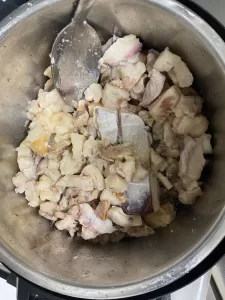
- Take the fat trimmings and cut them into small pieces, if it hasn’t been ground up. This smaller the sections, the faster it will cook.
- Place your raw fat pieces into a slow cooker or large pot. Cook on low heat for 2-3 hours. If you cook it on high heat, you can burn it.
- Occasionally stir your fat so that you can watch for it melting and help to ensure it doesn’t burn.
- As it melts, there will be a slight yellow tint. Everything will not melt because you will have impurities and other solids that you will strain out later.
- Once most of it is melted, set up your fine mesh strainer or cheese cloth. Pour your liquified beef fat through it.
- As it cools, it will begin to become a creamy white color. Put it into your glass storage jars or another airtight container.
- Congrats! You have rendered animal fat to use in the kitchen for cooking, candle making, or even your skin care regime.
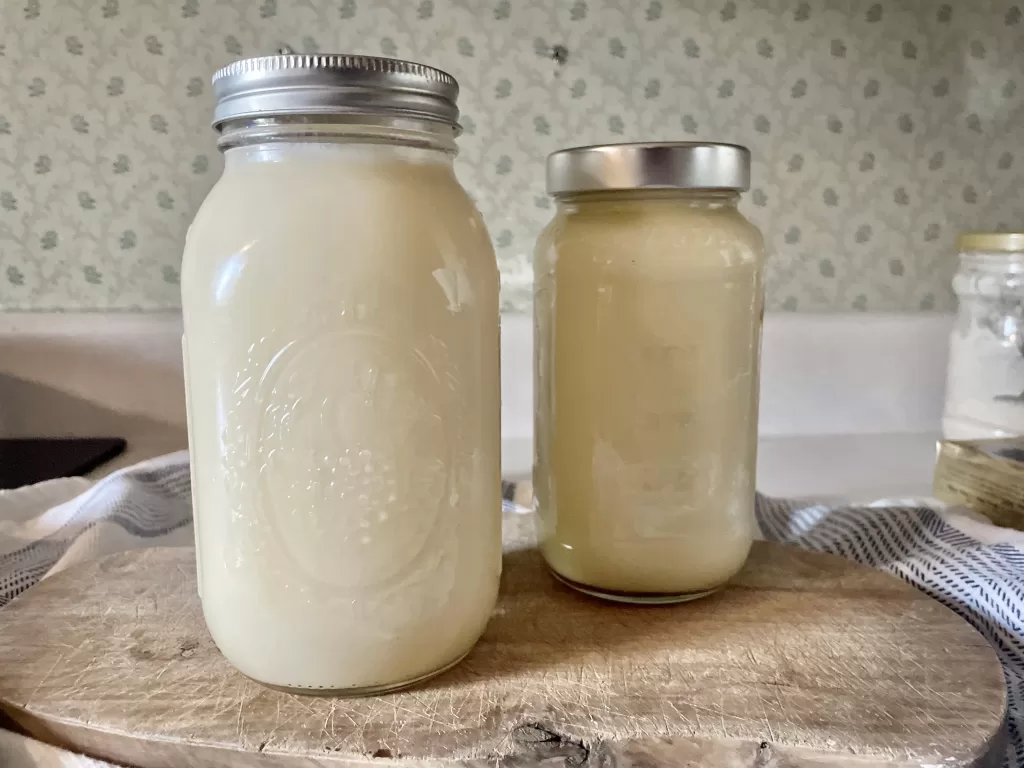 Tips for making beef tallow
Tips for making beef tallow
- It is best to cook this low and slow. You don’t want to burn it and ruin your batch.
- Make sure to stir often to prevent burning.
- If you want to speed up the process, grind the fat or ask your butcher to do it for you. This will allow you to use smaller pieces.
- As you cook, there will be solids in your tallow that you will strain out later.
- If you can get it, try to find pasture raised over conventional grocery store beef fat to make beef tallow.
- Another great option would be to ask a local butcher if they have any beef fat!
- As you cook down your beef fat, it will get more neutral smelling and turn creamy white. This is a good thing!
Tools to have to make beef tallow
- cutting board
- knife
- cheesecloth or mesh strainer
- slow cooker or large pot
- glass jars
How to Make Beef Tallow
Materials
- Beef fat
Tools
- Sharp knife
- Cutting board
- Slow Cooker or large pot
- Cheesecloth or fine mesh strainer
- Glass jars (for storage)
Instructions
- Prepare the beef fat by trimming excess meat and connective tissue from the fat. Cut it into small uniform pieces (you can also see if your butcher will grind it for you). This will help the fat melt more evenly.
- Place your diced fat into your slow cooker or pot over low heat. Allow the fat to gradually melt, stirring occasionally to prevent it from sticking or burning. Do this for a few years.
- Don't get impatient! Make sure to keep your heat low to avoid burning the fat and without compromising the quality.
- Once the fat is melted, strain it through a cheesecloth or fine mesh strainer into a heatproof container. This separates your melted tallow from the remaining solid bits.
- Allow the tallow to cool and come to room temperature. (You can speed this up by placing it in the fridge.)
- Transfer to glass jars for storage. Store in a cool, dark place or keep in your fridge for a longer time.
- Congrats! You've make your own beef tallow to use in the kitchen or for your skincare needs. 🙂
Conclusions
Beef tallow is one of the best ways to get your essential fatty acids, tame your appetite, supply cholesterol to your body, hydrate your skin, and use in high-heat cooking.
- Cholesterol plays an important role in brain and nervous system health.
- Fats keep your feeling full for longer and help to prevent your blood sugar from “yo-yo”ing throughout the day, creating cravings and feelings of fatigue.
- Tallow is an excellent choice for your skincare products as it helps to hydrate and moisturize your skin at the cellular level.
- Hydrogenated vegetable oils are unsafe to use at high temperatures, so opting for tallow, lard (rendered pork fat), or coconut oil are a better option.
- Rendering your own tallow allows you to have a fat that will keep for a long time (even longer if frozen) for your cooking and skincare needs.
Have you ever rendered your own rendered fat? Let me know!

Leave a Reply